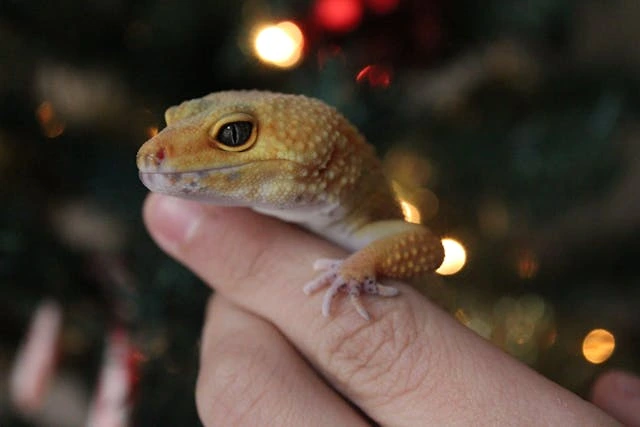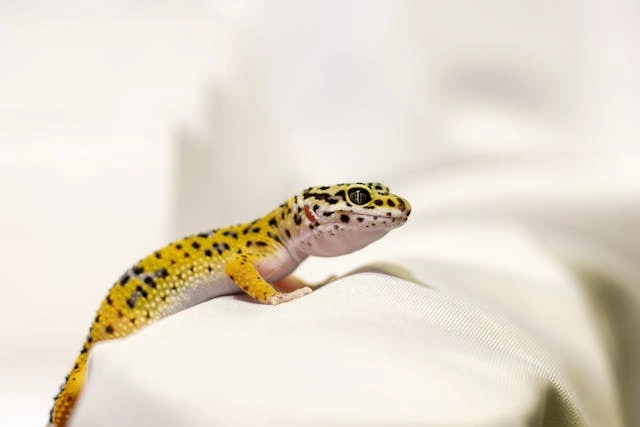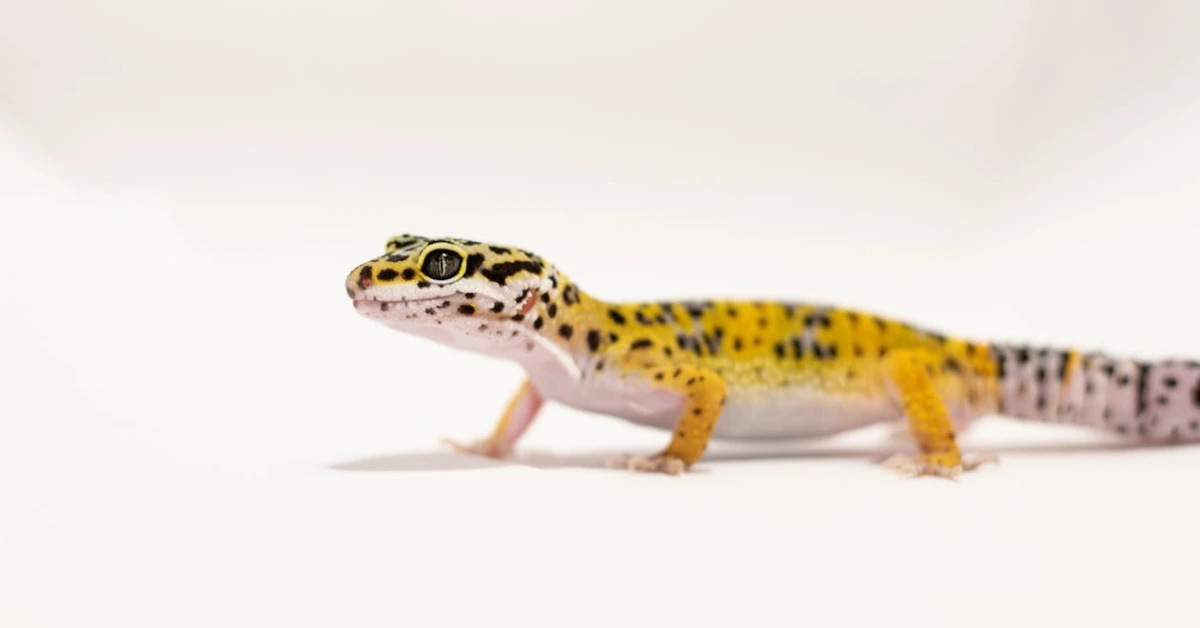With their striking spotted patterns, curious smiles, and eyelash-fringed eyes, leopard geckos (Eublepharis macularius) have charmed their way into countless homes as one of the most beloved reptile pets. Native to the arid regions of Afghanistan, Pakistan, and India, these docile, low-maintenance creatures thrive in captivity—when their unique Leopard Gecko pet care needs are met. Yet, their reputation as “beginner-friendly pets” often overshadows the nuanced habitat setup, dietary requirements, and handling techniques required to ensure their health and longevity.
Leopard geckos are more than just a pretty face; their ability to communicate through tail wags, regenerate lost tails, and live up to 20 years in captivity makes them fascinating companions. However, improper habitat setup, incorrect feeding schedules, or stress-inducing handling can lead to preventable health issues, from metabolic bone disease to parasitic infections. This guide will walk you through every aspect of responsible care, blending science-backed practices with hands-on tips to create a thriving environment for your scaled friend.
Whether you’re a first-time reptile owner or refining your care routine, this guide covers everything from setting up a 20-gallon terrarium to decoding nocturnal behaviors and preventing common health pitfalls. Each section provides step-by-step instructions, expert insights, and troubleshooting advice to empower you with confidence. By the end, you’ll not only master essentials like temperature gradient balancing and gut-loading feeder insects but also discover the joy of nurturing a happy, healthy leopard gecko that thrives under your care. Let’s dive in!
Understanding Leopard Geckos
What is a Leopard Gecko?
The leopard gecko (Eublepharis macularius) is a small, ground-dwelling lizard renowned for its striking spotted patterns and gentle demeanor. Unlike many geckos, these reptiles boast movable eyelids (a rarity in the gecko world) and lack the sticky toe pads that allow other species to climb smooth surfaces. Instead, they rely on sturdy claws for navigating rocky terrain. Their docile nature, coupled with a lifespan of 15-20 years, makes them a favorite among reptile enthusiasts.
One key trait setting them apart? Leopard geckos are vocal communicators—they chirp, squeak, and even “bark” to express curiosity or discomfort. And don’t worry about their tails: these geckos can shed their tails as a defense mechanism (a process called autotomy) and regrow them over time!
Native Habitat and Origins
Wild leopard geckos inhabit rocky, semi-desert regions across Afghanistan, Pakistan, and northwest India, where they evade daytime heat by hiding in crevices or abandoned burrows. These nocturnal hunters emerge at dusk to forage for insects, relying on their excellent night vision and acute sense of smell.
This arid, thermally variable environment directly informs their care in captivity: they require a warm basking zone (88-92°F) and a cooler retreat (70-75°F) to mimic natural temperature swings. Providing multiple hides and low humidity (30-40%) replicates the sheltered, dry microhabitats they seek in the wild.
Physical Characteristics and Morphs
Adult leopard geckos grow to 7-11 inches long, with stout bodies, granulated skin, and tails that store fat reserves—a lifeline during food scarcity. Their vertical pupils and lack of adhesive toe pads distinguish them from arboreal gecko species.
Selective breeding has produced stunning color and pattern morphs, including:
- Albino: Light-bodied with pinkish eyes (requires reduced lighting).
- Tangerine: Bright orange hues that deepen with maturity.
- “Blizzard”: Patternless, with a pure white or yellow base.
Despite their visual diversity, all morphs share identical care requirements, making them equally suitable for beginners.

Setting Up the Perfect Habitat
Choosing the Right Enclosure
A leopard gecko’s enclosure is their lifelong home, so size and safety matter! For a single adult, a 20-gallon long tank (30″ x 12″ x 12″) is the minimum recommended size—providing ample space for exploring, hunting, and thermoregulating. Juveniles can start in a 10-gallon tank, but upgrading as they grow reduces stress and supports natural behaviors.
Essential equipment includes:
- Under-tank heat mat: Placed under 1/3 of the tank to create a warm zone (88-92°F) for digestion.
- Thermostat: A must to regulate heat and prevent overheating.
- Hides: At least two—a moist hide (for shedding) and a dry hide on the cool side.
- Low-wattage lighting: Optional, as leopard geckos thrive in dim, indirect light.
Pro tip: Front-opening enclosures make cleaning easier and minimize handling stress!
Temperature and Humidity Requirements
Leopard geckos rely on a temperature gradient to stay healthy:
- Warm side: 88-92°F (for digestion and metabolism).
- Cool side: 70-75°F (for resting and cooling down).
Use a digital thermometer on each side to monitor temps—avoid analog gauges, which are often inaccurate. Humidity should stay between 30-40%, spiking slightly during shedding. A humid hide (lined with damp sphagnum moss) helps them shed smoothly. If your home is dry, a small water dish on the warm side can boost ambient moisture.
Remember: Consistency is key! Sudden temperature swings or prolonged high humidity can lead to respiratory issues.
Substrate Options and Safety
The right substrate keeps your gecko safe and your tank clean. Beginner-friendly options include:
- Paper towels: Cheap, hygienic, and easy to replace.
- Slate tile: Retains heat naturally and mimics rocky terrain.
- Reptile carpet: Washable and reusable (just trim loose threads).
Avoid loose substrates like sand, gravel, or wood chips—they pose impaction risks if ingested. Even “calcium sand” marketed for reptiles is unsafe!
For advanced keepers, bioactive setups (soil/sand mixes with live plants) can work, but they require meticulous maintenance. When in doubt, stick to simplicity: a safe substrate means fewer vet visits and a happier gecko.
Diet and Nutrition
What to Feed Your Leopard Gecko
Leopard geckos thrive on a diet of live insects, which mimic their natural prey. Top choices include:
- Crickets: High in protein and easy to digest; ideal for active feeding.
- Mealworms: Convenient for occasional meals (avoid overuse due to higher fat content).
- Dubia Roaches: Nutrient-rich and less likely to carry parasites.
Gut-loading (feeding insects nutrient-dense foods like leafy greens or commercial gut-load formulas 24 hours before feeding) ensures your gecko gets essential vitamins. Rotate feeders weekly—variety prevents boredom and gaps in nutrition.
Pro Tip: Avoid wild-caught insects, which may expose your gecko to pesticides or parasites.
Feeding Schedule and Supplements
Tailor feeding frequency to your gecko’s age:
- Juveniles (0-6 months): Daily, 4-6 small insects per meal.
- Adults (7+ months): Every 2-3 days, 6-8 appropriately sized insects.
Supplements are non-negotiable:
- Calcium with D3: Lightly dust insects at every feeding for juveniles, 2-3x weekly for adults.
- Multivitamin: Add once weekly to support immune health.
If using UVB lighting, you can reduce D3 supplementation slightly—consult a vet for balance.
Common Dietary Issues
- Overfeeding/Obesity: A plump tail is healthy, but a bulging belly or difficulty moving signals excess weight. Stick to portion sizes and avoid fatty feeders like waxworms as staples.
- Nutritional Deficiencies: Soft bones (metabolic bone disease), lethargy, or irregular shedding often stem from poor calcium intake or lack of variety.
Quick Fix: Keep a shallow dish of plain calcium in the enclosure for self-regulation.
When in Doubt: Weigh your gecko monthly. A healthy adult maintains 45-80 grams, depending on size.
Related: 9 Primates Kept as Pets
Behavior and Handling
Nocturnal Habits and Activity
Leopard geckos are crepuscular, meaning they’re most active at dawn and dusk—perfect for owners with daytime schedules! You’ll likely spot them exploring, hunting, or digging during these hours. To support their natural rhythm:
- Feed in the evening when their appetite peaks.
- Avoid bright lights at night; use a low-wattage red or blue bulb for observation.
- Respect their downtime: Daytime hiding is normal, not a sign of illness.
Watching your gecko’s nightly routines—like “glass surfing” (pacing the tank walls) or burrowing—offers clues about their health and comfort. A curious, active gecko is usually a happy one!
Tail Communication and Defense Mechanisms
A leopard gecko’s tail is a mood barometer:
- Slow, deliberate wags: Curiosity or focus (often seen during hunting).
- Rapid vibrations: Stress or agitation—give them space!
- Tail drop: A last-resort defense mechanism (autotomy) triggered by perceived threats.
If your gecko drops its tail, stay calm. Place them in a clean, quiet enclosure to reduce stress. The regrowth process takes 4-6 weeks, but the new tail will appear shorter and smoother. During this time:
- Boost protein intake with extra feeders like waxworms.
- Avoid handling until the wound fully heals.
While tail loss is survivable, prevention is best: handle gently and never grab their tail!
Proper Handling Techniques
Building trust takes patience, but these steps ensure stress-free interactions:
- Start slow: Let your gecko sniff your hand before lifting.
- Scoop, don’t grab: Slide your palm under their belly, supporting their legs and tail.
- Keep sessions short: Limit handling to 5-10 minutes initially, gradually increasing as they relax.
Signs of stress (hissing, tail vibrating) mean it’s time to return them to their enclosure. Over weeks, consistent, gentle handling will help your gecko associate you with safety—some even learn to climb onto shoulders willingly!
Pro tip: Wash hands before handling to avoid confusing your scent with food.

Health and Wellness
Common Health Problems
Even with the best care, leopard geckos can face health challenges. Here’s what to watch for and how to prevent issues:
- Metabolic Bone Disease (MBD): Caused by calcium deficiency or inadequate UVB exposure, MBD leads to weak, deformed bones. Prevent it by dusting feeders with calcium + D3 supplements and providing a shallow dish of plain calcium in the enclosure.
- Impaction: Blockages in the digestive tract, often from ingesting loose substrate (like sand) or oversized prey. Stick to safe substrates (tile, paper towels) and feed insects no wider than your gecko’s head.
- Parasites: Internal parasites like pinworms can cause weight loss or diarrhea. Quarantine new geckos, keep enclosures clean, and avoid wild-caught insects.
Pro tip: A well-balanced diet and consistent habitat hygiene are your best defenses!
Signs of a Healthy Gecko
A thriving leopard gecko shows:
- Clear, bright eyes (no cloudiness or retained shed).
- Plump tail (stores fat reserves) and firm body.
- Regular appetite (adults eat 2-3 times weekly; juveniles daily).
- Smooth shedding every 2-4 weeks, with no leftover skin on toes or eyelids.
Track their health by weighing them monthly on a kitchen scale and logging their eating habits. A temporary loss of appetite during shedding is normal, but prolonged refusal to eat warrants attention.
When to See a Veterinarian
While many issues can be prevented, some require professional care. Seek a reptile-savvy vet if you notice:
- Lethargy (unresponsive or sluggish behavior).
- No eating for over 7 days (especially with weight loss).
- Swollen joints, discolored skin, or runny feces.
- Difficulty shedding (retained skin can restrict blood flow).
To find a qualified vet, check directories like the Association of Reptilian and Amphibian Veterinarians (ARAV) or ask local reptile groups. Early intervention often leads to faster recovery—don’t hesitate to reach out!
Final Reassurance: Most health issues are preventable with attentive care. By monitoring your gecko’s habits and acting promptly at the first sign of trouble, you’re already giving them a great shot at a long, happy life.
Advanced Leopard Gecko Pet Care Tips
Shedding Assistance
Leopard geckos shed their skin every 2-4 weeks, but sometimes patches stick—especially on toes, eyelids, or the tail tip. This “dysecdysis” (difficult shedding) often stems from low humidity or dehydration. Here’s how to help:
- Boost humidity: Increase enclosure moisture to 40-50% during sheds.
- Provide a moist hide: Line a small hide with damp sphagnum moss or paper towels, creating a mini sauna.
- Soak gently: For stubborn shed, place your gecko in a shallow lukewarm bath (up to their elbows) for 10 minutes, then gently rub affected areas with a cotton swab.
Never pull off stuck shed—this can tear their delicate skin. With a well-maintained moist hide, most geckos shed effortlessly!
Enrichment and Decor
While leopard geckos aren’t climbers, they still benefit from stimulating environments:
- Climbing structures: Add low rocks, cork bark, or ramps to encourage light exploration.
- Visual barriers: Artificial plants or half-logs create privacy, reducing stress.
- Digging boxes: A small container filled with coconut fiber lets them mimic natural burrowing.
Enrichment isn’t just fun—it prevents boredom and obesity. Rotate decor monthly to spark curiosity (but keep favorite hides in place for security).
Conservation and Ethical Considerations
Leopard geckos are abundant in captivity, but wild populations face threats from habitat loss and the pet trade. To support ethical practices:
- Choose captive-bred geckos: Avoid wild-caught individuals, which often carry parasites and stress easily.
- Research breeders: Prioritize those who prioritize animal welfare over rare morphs.
- Educate others: Share the importance of preserving their native ecosystems in Afghanistan and Pakistan.
By adopting or purchasing from reputable sources, you help reduce demand for wild-caught animals and promote sustainable reptile keeping.
Conclusion
Caring for a leopard gecko is a rewarding journey that blends science, observation, and a dash of creativity. By now, you’ve learned the essentials:
- Habitat mastery: A temperature-gradient enclosure with safe substrates and cozy hides mirrors their natural rocky terrain.
- Nutritional balance: A diet of gut-loaded insects, calcium supplements, and portion control keeps them energetic and disease-free.
- Trust-building: Gentle handling and respect for their nocturnal rhythms foster a bond built on patience.
- Preventive care: Regular health checks and prompt vet visits nip issues in the bud.
While the details might seem daunting at first, remember that consistency and attentiveness matter most. These resilient, charismatic reptiles thrive under care that prioritizes their physical and mental well-being—whether through enriching decor, ethical sourcing, or simply letting them “bark” their opinions during evening explorations.
Your efforts will pay off in the quiet joy of watching your gecko hunt, shed, and curl into their favorite hide, content in a home crafted with their needs in mind. Here’s to many years of shared curiosity and companionship with your spotted friend!
Sources:
Enhancing Leopard Gecko Well-Being: The Role of Environmental Enrichment in Health and Behavior
Comprehensive Biology and Husbandry Guide of Eublepharis macularius
From Captivity to Contribution: The Leopard Gecko’s Journey Through Pet Trade, Science, and Innovation
Leopard Gecko Care Essentials: Habitat, Nutrition & Health Tips from the The RSPCA
